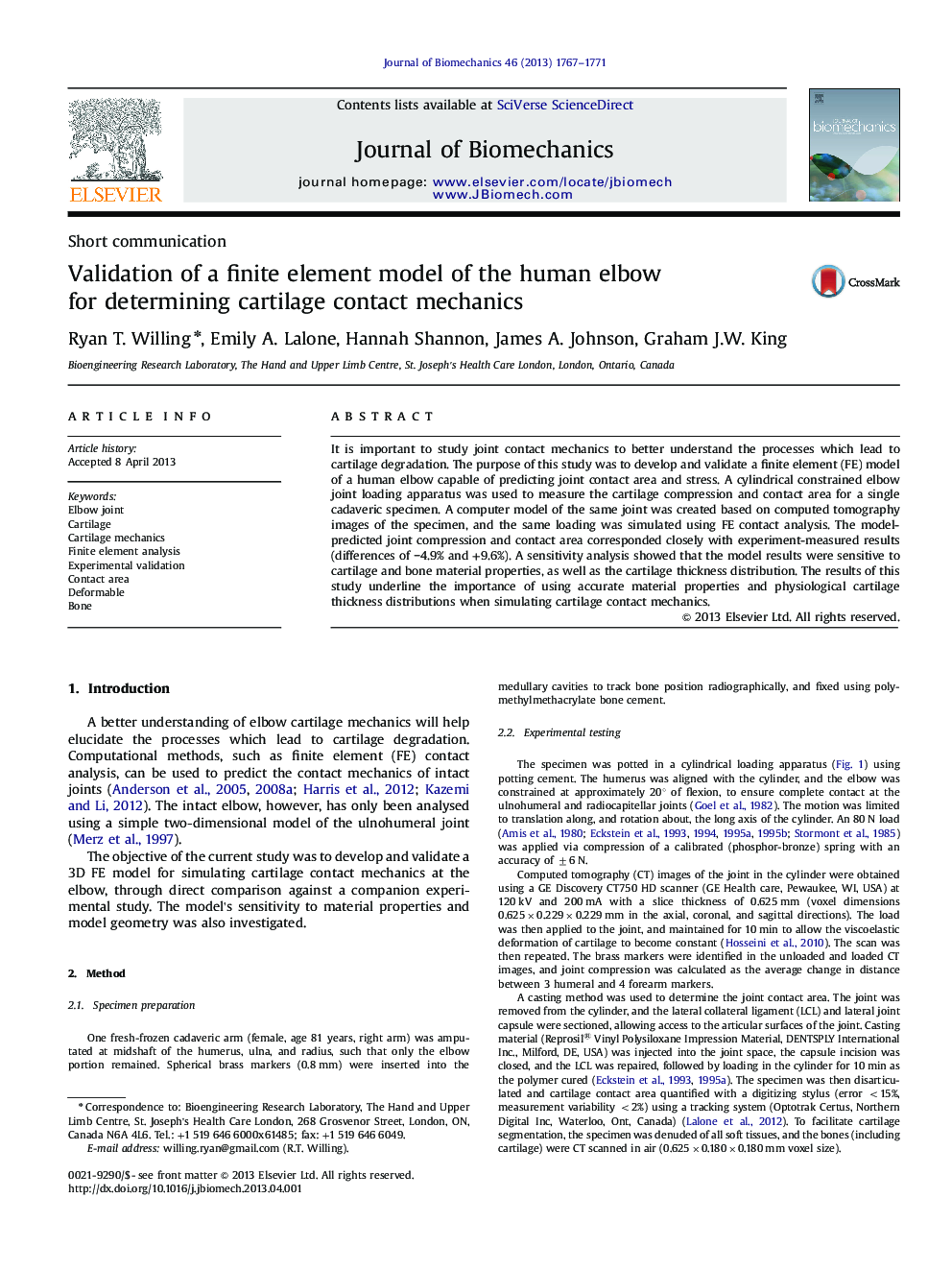| Article ID | Journal | Published Year | Pages | File Type |
|---|---|---|---|---|
| 10431914 | Journal of Biomechanics | 2013 | 5 Pages |
Abstract
It is important to study joint contact mechanics to better understand the processes which lead to cartilage degradation. The purpose of this study was to develop and validate a finite element (FE) model of a human elbow capable of predicting joint contact area and stress. A cylindrical constrained elbow joint loading apparatus was used to measure the cartilage compression and contact area for a single cadaveric specimen. A computer model of the same joint was created based on computed tomography images of the specimen, and the same loading was simulated using FE contact analysis. The model-predicted joint compression and contact area corresponded closely with experiment-measured results (differences of â4.9% and +9.6%). A sensitivity analysis showed that the model results were sensitive to cartilage and bone material properties, as well as the cartilage thickness distribution. The results of this study underline the importance of using accurate material properties and physiological cartilage thickness distributions when simulating cartilage contact mechanics.
Keywords
Related Topics
Physical Sciences and Engineering
Engineering
Biomedical Engineering
Authors
Ryan T. Willing, Emily A. Lalone, Hannah Shannon, James A. Johnson, Graham J.W. King,
